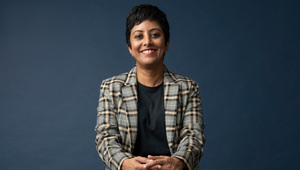
UM Cracks the Social Code

UM, a division of IPG Mediabrands, today launched Wave 7, the world’s largest and longest running survey representing more than 1 billion active internet users.
Wave, the first social media study on a global scale, has tracked the dynamic shifts that have taken place within the social media landscape for the last seven years. As part of this year’s survey, the importance of the human need to connect combined with the proliferation of smartphones reveals compelling insights into consumer behavior. These insights offer brand marketers an opportunity to create customized media strategies that speak to consumers locally and at the global level.
“It’s no longer enough to simply track the latest trends, because much of what you see is just background noise or, even worse, a complete distraction. What we really need is to understand the motivations behind these trends – because even the most superficial social interaction online is driven by a consumer need," said Pat Lim, Managing Director, IPG Mediabrands, Singapore.
"Wave 7 has identified that consumers will connect with brands that meet five basic needs. By answering these needs, and by combining technology, social platforms and media in a more cohesive way, brands can put themselves in an extremely powerful position. We believe Wave 7 can guide them through this journey," she added.
According to Wave 7, Relationship, Diversion, Learning, Progression, and Recognition are the five key needs underpinning all consumer interaction. These five motivations continue to fuel the world’s prolific use of social media. Wave 7 shows no sign of internet user fatigue. The rapid growth of mobile is resulting in an “always on” mentality with consumers around the world being more connected, more often.
“In Singapore, SEA and wider APAC region, increase in mobility and device ownership particularly smartphones, laptops, tablets, mini tablets and even internet-connected TVs is leading to growth, intensity and diversification of social media activities that satisfies the need for connection and self-expression,” stated Lim.
She added: “Social media is no longer an activity solely for the young or early adopter. Its high penetration gives us an unprecedented opportunity to understand consumers by analysing their social behaviour and unlocking the true value proposition to foster a mutually beneficial relationship and build long-term relationships online.”
KEY WAVE 7 FINDINGS
- Socialisation is a day-to-day imperative – It fulfils the fundamental need to communicate and supports the basic emotional and psychological needs. Brands must become fully involved in their professional/owned assets to manage social perceptions among its fans as well as understand how they can satisfy their users’ core needs and what value they can add to drive loyalty.
- Mobility is the norm – Formats are converging and more and more people are using mobile devices than ever before. Smartphone now rivals the desktop and is closing in on the laptop. As smart technology increase the frequency of social interactions online people want to respond quickly, easily and in context of what’s happening around them right now. This means that marketers must create more local and contextual experiences for users to share and respond in a spontaneous manner.
- Privacy and sharing information - a fragile balance: The former CIA technical worker Ed Snowden’s allegations of widespread governmental gathering of personal information has made internet privacy a front page issue. And yet, as devices become central to users’ lives, they are willing to share data with companies that make their online experiences better.
LEADERS AND LAGGARDS
- Social Media: Bucking the global trend, Facebook shows no sign of decline in SEA or even the larger APAC region. Users across Southeast Asia use affinity social networking to satisfy their core needs of Relationship (58%), Diversion (51%), Recognition (53%), Progression (39%) and Learning (49%).
In Singapore, virtual sharing via social networking (76%) is on its way to overtake F2F sharing (81%) while messenger apps, the third highest mode of communication, trails closely at 66%.
- Microblogging: The trend of microblogging which was seen a strong uptick globally (52%), has seen a rather slower adoption by Singaporeans with only 40% following this trend. Indonesians are the most active microbloggers in the Southeast Asia region at 69% while China is leading the way with 86% of internet users active on Sina Weibo.
- Device Ownership: More devices mean more platforms, more access points and thus more experiences. Laptop is still the most versatile device globally (80%) and across APAC region (83%), barring Korea where mobile infrastructure makes smartphone the most dominant device owned (84%) over laptops (65%).
Laptop ownership is the highest among Singaporeans (90%) ahead of regional and global users. Dominant activities among Singaporeans include researching something thoroughly (70%), closely followed by watching content and making a purchase (67%) – an activity which has seen minimal usage by other devices.
Singaporeans love their smartphones (88%). Ownership is significantly higher than SEA (73%) and global user base (73%) though it was China and Hong Kong that topped the charts (90%). Singaporeans use Smartphones to socialise (73%); find their way (70%) and; access information quickly (69%).
For tablet ownership, once again, Singaporeans (44%) were ahead of the global (33%) and regional average (33%). Singaporeans use tablets primarily to ward off boredom (48%), have fun and be entertained (47%), and relax (46%). The activities are similar to trends seen globally.
- Privacy: Almost 67% of global consumers registered concern about the amount of personal data online. However, over 49% are supportive of brands using online behavioral data for marketing if it improves their online experience. This value-exchange has resulted in a 9% spike in consumer membership in brand communities since Wave6, proving that a greater understanding of consumer needs can lead to a more strategic approach to engagement.
In Singapore, 69% of Singaporeans are hesitant to share of personal data online compared with 66% of uses in the region and 67% globally. At the same time, 75% of internet users have joined brand communities, consistent with the regional numbers (76%).
In Southeast Asia, Filipinos, despite being the most avid social networkers, were the most concerned about privacy. According to Wave7 data, 76% of users expressed they were concerned about the amount of personal data online, followed by the Chinese (71%). Least worried were the Indonesians (57%).
- Professional Social Networking: Professional social network has shown the fastest growth in the past year both globally as well as in Singapore, where it increased 16%, rising from 35% as seen in Wave6 to 51% this year. The platform has become a key place to boost professional profiles, as well as influence opinions and earn respect.
Emerging markets in the Southeast Asia region such as Indonesia and the Philippines are increasingly seeing social media as essential to improving social status, with 30% and 36% respectively, agreeing it helps build career and financial opportunities.
South Koreans at 25% were the least keen in the APAC region to leverage it for career advancement opportunities.
OPPORTUNITIES FOR MARKETERS:
- Video consumption is the highest activity online (84%) among Singaporeans. Conversely, only 21% of Singaporeans stated they will create a video to post online. This offers huge opportunities for content creators – be it publishers or brands to tell interesting stories via videos.
- When it comes to visiting brand websites, 75% Singaporeans expressed keenness, stating, it fulfilled their need for “Learning” and keeping themselves up-to-date. Brand websites enjoy a privileged position for being content creators – whether it is about their products or services that can offer new experiences for users to learn and share.
Singaporeans visit brand websites for three primary reasons: to learn more about the brand (80%); to get advance news about products (80%) and; to receive discount coupon or product trial (77%). These core reasons are the very same for users across APAC region or even across the globe, offering marketers an invaluable insight into why people are joining brand communities.
- A key trend was the growth of professional social networking in Singapore, the region and across the globe, indicating the need by users to rationalise their social media experiences. More professional social network users see it’s a place to make contacts and earn respect.
Brands who can offer opportunities for personal growth to users can leverage the popularity of professional social networking sites to reach and influence them.
- Reading blogs is high among Singaporeans (62%) and comparable with regional (68%) and global statistics (68%). Contrarily, when it comes to posting/writing stories for their own blog/weblog, only 28% Singaporeans were active in this activity compared with 41% internet users in the region and 39% globally.
This once again goes to prove that there is tremendous opportunity for content creators and storytellers to leverage the opportunity in the island nation.
See more here.















